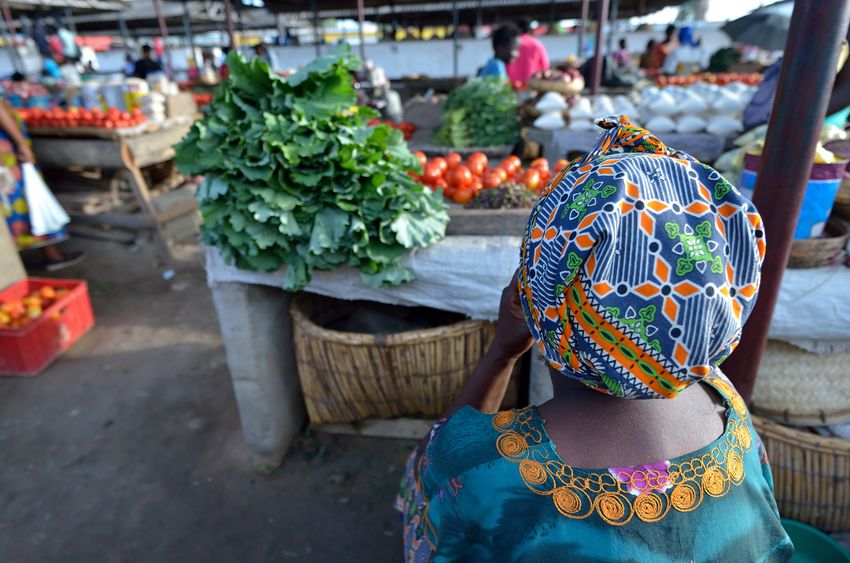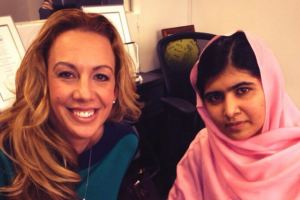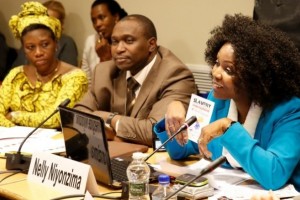A Conversation with Katherine Brandon: Global Efforts, Great Results – with Work Still to be Done
The United Nations Foundation is and has proven to be one of the most powerful organizations in the world for solving global issues; it has the reach and vision capable of doing so, and is a role model for international cooperation. And as the saying goes, with great power comes great responsibility, and the U.N. Foundation has lived up to that by consistently putting forward hugely influential campaigns and initiatives, especially when it comes to women’s empowerment.
One of the most recent examples of this: In early 2012, the United Nations Foundation and the ExxonMobil Foundation partnered to create a Roadmap for Promoting Women’s Economic Empowerment, a report that compiles evidence on what works to increase women’s productivity and earnings. The Roadmap identifies proven, promising, and high potential interventions based on a review of nearly 140 rigorous program evaluations across four domains: entrepreneurship, farming, wage employment, and young women’s employment.
SharpHeels and I were fortunate enough to get in touch with Katherine Brandon, United Nations Communications Officer for Women and Population, at the Washington D.C.-based U.N. Foundation, to chat about economic women’s empowerment and the findings from the Roadmap report. Prior to her role at the U.N., Ms. Brandon interned at the White House and also at global problem-solver advertising agency GMMB.
Can you give us a brief summary on some of the interventions and programs that have proven to be quite promising throughout your research, and why?
Research has demonstrated that expanding women’s economic opportunities benefits families, communities, and nations. However, until recently, there was a crucial knowledge gap around how to most effectively empower women economically.
So, what the Roadmap for Promoting Women’s Empowerment found was that there is no “one size fits all” intervention – what works depends on the economic situation of the woman and the context in which she lives. Additional findings include:
-
-
- Saving is proven to increase women’s business earnings, and the use of mobile phones, which is a promising intervention, can deliver financial services and market information in a cost-effective way to women farmers and entrepreneurs.
- Very poor women need a more intensive package of services than less poor women to break out of subsistence production, on and off the farm, in agriculture and entrepreneurship.
- Providing capital in-kind (as inventory, for instance) rather than in cash can help nudge women microentrepreneurs to keep capital in the business, and avoid pressure to divert it to other family members or household needs.
- Access to childcare increases women’s wage employment levels and earnings, but design and delivery matter to ensure quality, affordable and cost-effective care.
- Cash grants may increase young women’s employment and income and have sizeable social benefits.
-
Are there any other great finds that you’d like to share regarding positive outlooks for the future of women’s economic empowerment?
The outlook for girls and women is increasingly positive, as women’s economic empowerment is recognized as key to meeting all other global development goals. Gender issues are at last taking center stage — from the post-2015 development agenda, to the unprecedented number of companies now focusing on women’s economic empowerment. For example, in addition to our partner, ExxonMobil, we know that Gap, Nestlé, Walmart, Coca-Cola, Nike, and Goldman Sachs all have significant corporate programs to empower girls and women.
How do you find the positive changes made in developed countries regarding women’s empowerment affect women in developing countries?
The increase in leadership roles for women in the public, academic and private sectors represents a positive social change, with benefits to women in both developed and developing countries. Women’s meaningful participation in political and management positions often increases the representation of women’s concerns more broadly as social issues, and the types of solutions that can be proposed to increase women’s empowerment. Studies have shown that when women are empowered as political leaders, countries often experience higher standards of living, with positive developments in education, infrastructure and health, and concrete steps to help make democracy deliver.
Former U.S. Secretary of State Hillary Clinton is a great example of the influence of women leaders to advance global gender equality and women’s empowerment. In 2012, she launched Data2X, an initiative that aims to build new partnerships to improve data collection and demonstrate how better data on the status of women and girls can guide policy, leverage investments, and inform global development priorities. Data2X and its partners are hoping to spur a gender data revolution and identify innovative sources of data that will generate policies and interventions that positively impact the lives of women around the world.
How would you describe the progress we, in both developed and developing countries, are making towards a gender-equal world?
In 1995, the United Nations Fourth World Conference on Women in Beijing called for global action on the “full and equal participation of women in political, civil, economic, social and cultural life”. This comprehensive agenda spanned all areas, including health, education, violence, the economy, and the environment.
Since then, we have seen great progress made in women’s access to and attainment of education and health services, but to quote our Clinton Foundation No Ceilings: The Full Participation Project partner, “We’re not there yet.” Girls and women are living longer and healthier lives, and we’ve seen improvement particularly in regions with high child mortality and high maternal mortality. Globally, primary school enrollment rates of boys and girls are nearly equal, and have narrowed in Sub-Saharan Africa, but social, legal, and economic constraints that undermine women’s economic opportunities still exist.
For example, even though some countries in Sub-Saharan Africa and Asia have constitutional guarantees of married women’s rights over land and property, these rights can be superseded by customary law that favors husbands in the event of widowhood or separation. These challenges affect women’s ability to access productive resources and impact their economic outcomes.
Globally, women earn only three-quarters as much as men. This is true even with the same level of education, and in the same occupation. Women also tend to be overrepresented in less secure jobs, such as informal, temporary, or part-time work. This is partly because women face social and time constraints (i.e. restrictions on appropriate social spaces for them to occupy, or their larger share of household duties) that limit their employment options. To achieve gender equality, more work can be done to bring awareness to these and other gender constraints, and to strengthen women’s economic empowerment programs through investing in those that have been proven to work. To see more, visit www.womeneconroadmap.org.
TAGS: UN UN Women United Nations
 Interviewer Interview Prep
Interviewer Interview Prep Impactful Mentees
Impactful Mentees Benefits of a Mentor
Benefits of a Mentor Advice for First-Time Managers
Advice for First-Time Managers Overcoming the 18-month Itch
Overcoming the 18-month Itch Dressing for Your Style
Dressing for Your Style Interview Style Tips
Interview Style Tips Women's Stocking Stuffers
Women's Stocking Stuffers Gift the Busy Traveler
Gift the Busy Traveler Father’s Day Gift Guide
Father’s Day Gift Guide Airport Layover Activities
Airport Layover Activities Traveling & Eating Healthy
Traveling & Eating Healthy Travel Like a Boss Lady
Travel Like a Boss Lady The Dual California Life
The Dual California Life Gifts for Thanksgiving
Gifts for Thanksgiving Summer Reading List
Summer Reading List Top Leisurely Reads
Top Leisurely Reads New Year, New Books
New Year, New Books Life Lessons from a Sitcom
Life Lessons from a Sitcom Oprah, Amy or Amal?
Oprah, Amy or Amal?











